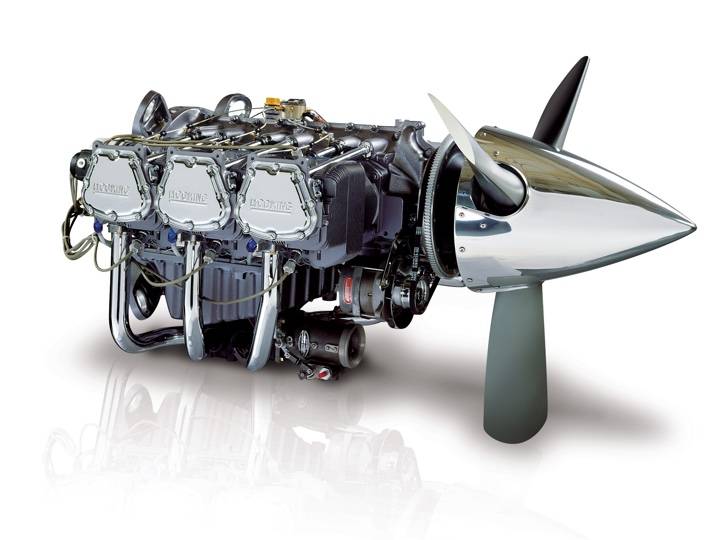
In this aviation-related discussion, we’ll explore the reasons behind the excessive oil blowout in a Lycoming IO-540 engine, which is releasing up to nine quarts of oil. Understanding the potential causes behind this issue is essential for maintaining the engine’s performance and ensuring safe flight operations.

Why Does My Lycoming IO 540 Blow Oil Out Till Nine Quarts
An engine blowing oil out excessively, up to nine quarts, can be indicative of various underlying issues with the Lycoming IO-540 engine. Here are some potential reasons for this problem:
- Piston Ring Wear: Worn piston rings can allow excessive oil to pass into the combustion chamber, leading to oil consumption and blow-by, which may result in oil being blown out of the engine.
- Cylinder Wear: Cylinder wear, particularly on the walls and piston skirts, can cause increased oil consumption and blow-by, contributing to the oil blowing out of the engine.
- Valve Seal or Guide Issues: Faulty valve seals or worn valve guides can result in oil leaking into the cylinders during engine operation, causing increased oil consumption and blow-by.
- Turbocharger Seal: If the engine is equipped with a turbocharger, a worn or damaged turbocharger seal can lead to oil being pushed into the engine’s intake and combustion chamber.
- Crankcase Pressure: Excessive crankcase pressure due to blocked or malfunctioning crankcase ventilation systems can force oil out of the engine.
- Gasket Leaks: Leaks in various engine gaskets, such as the head gasket or crankcase gasket, can cause oil to escape from the engine.
To diagnose and resolve the issue properly, it is essential to have a qualified aviation mechanic or Lycoming engine specialist thoroughly inspect the engine. They can perform a compression test, cylinder leakage test, and check for signs of excessive wear or oil leaks to identify the specific cause of the oil blowout. Timely maintenance and addressing any detected issues promptly can help ensure the engine’s optimal performance and longevity.
What is the oil pressure limits for a Lycoming IO 540?
The typical oil pressure range for Lycoming engines falls between 60 to 90 pounds per square inch (psi), denoted by the green arc on the oil pressure gauge. Most models allow a maximum pressure of 115 psi for short durations, an increase from the previous limit of 100 psi. The top red line on oil pressure gauges usually indicates 100 psi, while the lowest allowable limit during idle operation with hot oil is 25 psi, indicated by the lower red line on the gauge.
Lycoming factory-rebuilt engines are generally set to operate at cruise rpm with oil pressures between 75 to 85 psi. Following the engine break-in process, slight adjustments to the oil pressure may be required for most new, rebuilt, or overhauled engines to finalize the setting.
Lycoming IO-540 Engine – Overview
The Lycoming IO-540 engine is a six-cylinder, fuel-injected, horizontally opposed, air-cooled aircraft engine. It is a member of Lycoming’s renowned O-540 series of engines and is widely used in various general aviation aircraft, including single-engine airplanes and helicopters. With a reputation for reliability and durability, the Lycoming IO-540 has become a popular choice among pilots and aircraft manufacturers.
The IO-540 engine features a displacement of 541.5 cubic inches (8.9 liters) and is available in different versions, including the IO-540-K1A5, IO-540-C4B5, and IO-540-V4A5. These variants offer varying power outputs, ranging from approximately 250 to 350 horsepower, making them suitable for a wide range of aircraft applications.
One of the IO-540 engine’s notable characteristics is its direct drive configuration, where the engine’s crankshaft is directly connected to the propeller without the use of reduction gearing. This design simplifies the engine’s construction and helps reduce weight, contributing to the engine’s overall efficiency and performance.
The IO-540 engine’s fuel injection system ensures precise fuel metering, providing improved fuel efficiency and smoother engine operation compared to traditional carbureted engines. This fuel injection system, combined with the engine’s advanced ignition system, results in better fuel economy and reduced emissions, making it compliant with modern environmental standards.
Lycoming is renowned for its emphasis on producing reliable and sturdy engines, and the IO-540 is no exception. The engine’s robust construction, high-quality materials, and rigorous manufacturing processes contribute to its exceptional reliability and longevity, which are vital factors for the safety and performance of aircraft.
Moreover, the IO-540 engine’s design incorporates a horizontally opposed configuration, where the cylinders are arranged in two banks on opposite sides of the crankcase. This layout helps provide a more balanced and smoother operation, reducing vibration and improving pilot comfort during flight.
Due to its widespread use and positive reputation, the Lycoming IO-540 engine has earned the trust of pilots and aviation enthusiasts worldwide. With its combination of power, efficiency, and reliability, the IO-540 continues to be a popular choice for a variety of general aviation applications, making it an enduring and integral part of the aviation industry.
What to do When Your Zojirushi Rice Cooker Gets an H01 or H02 Error Code
What happened to Dale Robertson’s horse Jubilee?
What does it mean when a lizard poops on you?
What is the meaning of 18 bills in a debut?
What is the most expensive item on TF2?
Are lubber grasshoppers poisonous to dogs?
Ice JJ Fish Net Worth
